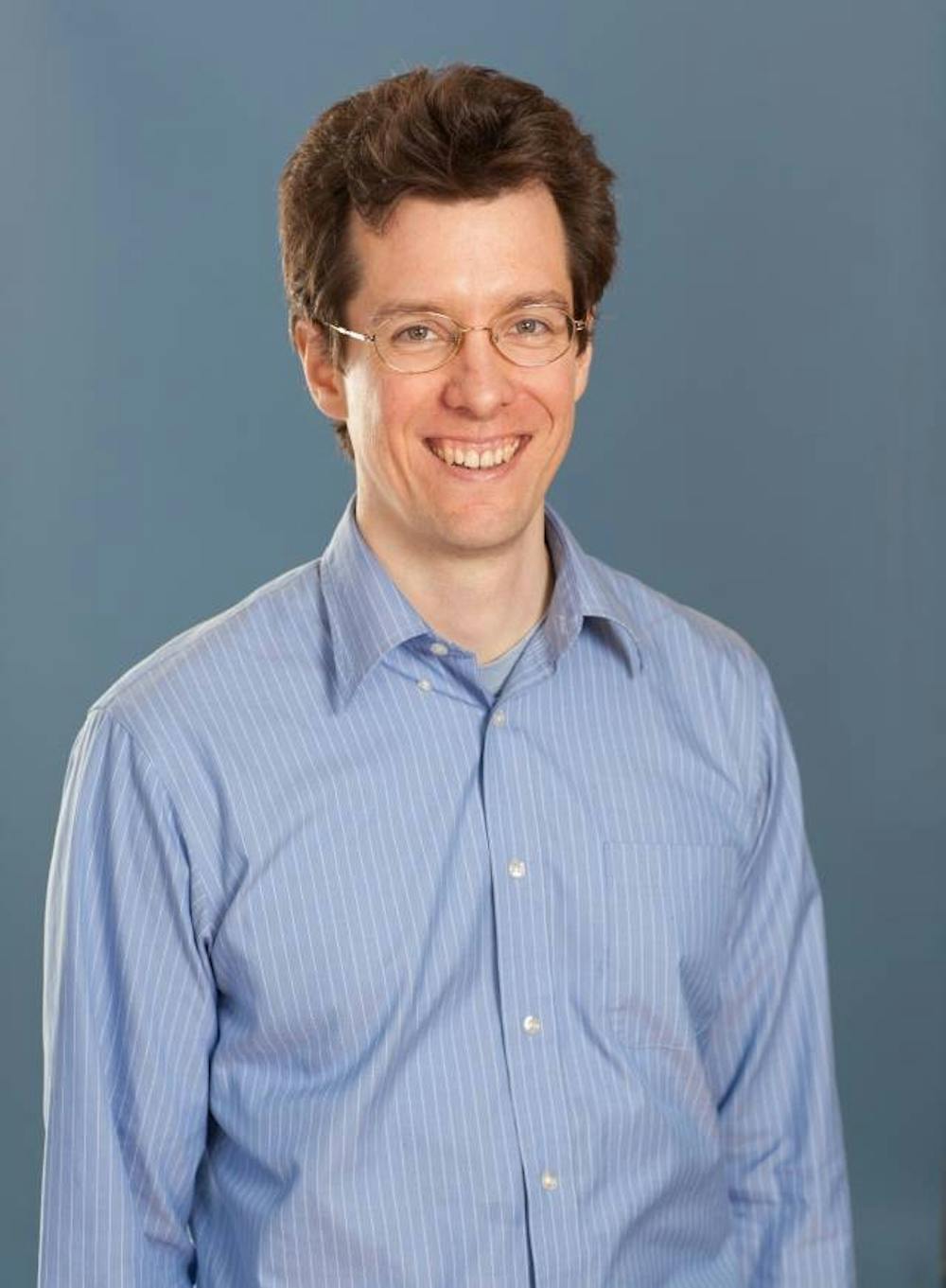Prominent theoretical physicist and professor of physics Steven Scott Gubser ’94 died in Chamonix, France, on Saturday, Aug. 3.
Gubser died from a rock-climbing accident while scaling the Comb Needle near Mont Blanc, Europe’s highest peak, when he was on vacation with his family. He was 47 years old.
Gubser was born in Tulsa, Okla., on May 4, 1972, as the second son of Nicholas James Gubser II and Margo Gubser Gardner. Soon after his birth, Gubser’s family relocated to Aspen, Colo. He attended secondary schools in Aspen and Denver, eventually graduating from Cherry Creek High School in Greenwood Village, Colo.
As a high school student, Gubser had already demonstrated his intellectual prowess, having been the first American to ever become the absolute winner of the International Physics Olympiad in 1989 at the age of 17, as well as a silver medalist at the 1990 International Chemistry Olympiad.
Gubser enrolled at the University as an undergraduate student, concentrated in physics and graduated in 1994 as class valedictorian. For his senior thesis, Gubser was awarded the LeRoy Apker Award by the American Physical Society, its most distinguished accolade for undergraduate research.
After completing Part III of the Mathematics Tripos at Cambridge University as a Fulbright Scholar in 1995, Gubser returned to the University for graduate studies and completed his Ph.D. in only three years, under the supervision of Igor Klebanov GS ’86, the Eugene Higgins Professor of Physics and the director of the Princeton Center for Theoretical Science, as well as adviser to Gubser’s senior thesis.
“He was very casual, very informal in a way, but very focused about theoretical physics,” Klebanov said. “Once he started working on a problem, he would dive in and work super hard. Both as an undergraduate student and as a graduate student he displayed maturity well beyond his age.”
After completing his doctorate, Gubser spent two years as a junior fellow at the Harvard Society of Fellows from 1998 to 1999, and then returned to the University as a faculty member in 2000.

Gubser served as a professor of physics at the California Institute of Technology in 2001 while on leave from the University, after which he became an associate professor of physics at the University and was eventually promoted to full professor in 2005, a title he kept for the remainder of his life.
Gubser’s specialty in theoretical physics was string theory and its applications. When he was a graduate student, Gubser’s collaborations with Klebanov and the Joseph Henry Professor of Physics Alexander Polyakov resulted in foundational contributions in anti-de Sitter/conformal field theory (AdS/CFT) correspondence. A 1998 paper co-authored by the three physicists, titled “Gauge theory correlators from noncritical string theory,” is now one of the most-cited papers in theoretical high energy physics.
Later in his career, Gubser continued to study various aspects of AdS/CFT correspondence, such as its applications in quantum chromodynamics as well as condensed matter physics.
Gubser’s many awards include the inaugural Gribov Medal of the European Physical Society, a Guggenheim Fellowship, a Blavatnik Award for Young Scientists, a Simons Investigator Award, among others. Christian Jepsen, one of the physics graduate students under Gubser’s supervision, lauded Gubser’s qualities as a mentor.

“His very easygoing and approachable style made it that you weren’t afraid to ask the dumb questions,” Jepsen remarked. “He had a wonderful skill of concisely presenting the core idea of a step so that suddenly, an idea that was intimidating had suddenly become familiar.”
As associate chair for undergraduate affairs at the Department of Physics, Gubser was actively involved with undergraduate teaching at the University. As a member and then Chair of the Princeton Faculty Council on Teaching and Learning, Gubser introduced new methods of teaching to existing courses, such as PHY 101: Introductory Physics I and PHY 102: Introductory Physics II.
In addition to graduate courses in classical mechanics and quantum mechanics, Gubser also created and regularly taught PHY 211: Invitation to Theoretical Physics, a seminar frequently taken by first-years and sophomores interested in physics, as well as several introductory physics courses at the 100-level.
Mufaro Chitoto ’22, who enrolled in Gubser’s PHY 211 course during his last semester of teaching, praised Gubser’s commitment and attention to undergraduate students.
“The fact that he took time out of his very busy day to bake cookies to bring to every class shows how much he was devoted to his students,” Chitoto said.
In addition to his scholarly work, Gubser was also the author of two popular science books: “The Little Book of String Theory,” published in 2010 by Princeton University Press; and “The Little Book of Black Holes,” which he co-authored with Professor of Physics Frans Pretorius and was published by Princeton University Press in 2017.
Gubser was frequently seen unicycling around Princeton with his two younger daughters; he and his daughter Lillian led the Class of 1994 on unicycles at the 2019 P-rade for Gubser’s 25th Princeton reunion. Gubser even unicycled across a frozen Lake Carnegie.
A skilled piano player, Gubser regularly played at the annual physics department recital, most recently singing with his oldest daughter, who is a member of an a cappella group at Princeton High School.
Steven Gubser is survived by his wife, Laura Landweber ’89, and their three daughters: Cecily, Heidi, and Lilian.
A celebration of Gubser’s life and work took place in the University Chapel on the morning of Saturday, Sept. 14.








